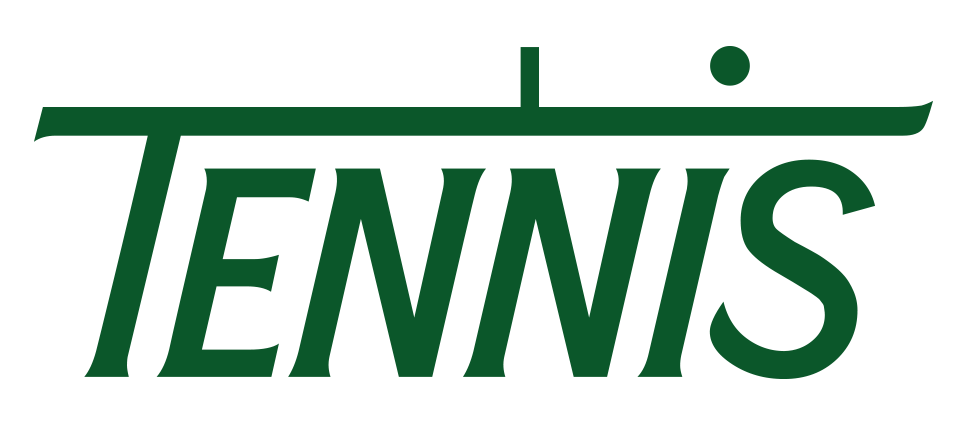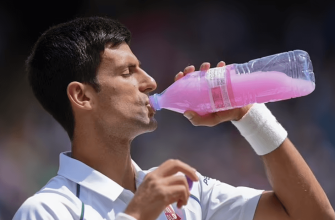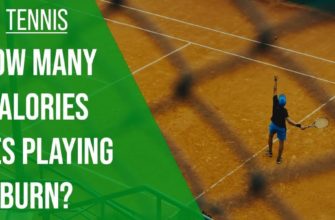Tennis elbow causes pain in the outer part of the elbow due to overuse or strain on the forearm tendons. It affects tennis players but also people who type or lift heavy objects.
So, who can treat it? An orthopedic specialist or sports medicine physician. They specialize in musculoskeletal issues and know how to diagnose and manage tennis elbow.
They evaluate the condition with physical exams, medical history and images. Then, they create a personalized treatment plan based on severity and the patient’s needs. Treatment options may include rest, ice, NSAIDs, physical therapy, braces/splints, corticosteroid injections, shockwave therapy, or surgery.
Surprisingly, Hippocrates first described it in 460 BC – calling it “arsenalgia.” Since then, we’ve made lots of progress in understanding and treating it.
What is Tennis Elbow?

Tennis elbow, also known as lateral epicondylitis, is a condition which causes pain and tenderness on the outer part of the elbow. It is usually caused by overusing or repeating arm muscles movements. The condition is named after the game of tennis as it’s commonly seen in its players. However, it can also affect people who do activities that involve gripping or wrist movements.
When it comes to treating tennis elbow, healthcare professionals can provide effective care. Primary care physicians may give initial advice and suggest self-care measures. For further evaluation and treatment, an orthopedic doctor may be consulted.
Orthopedic doctors are experts in diagnosing and treating musculoskeletal issues. They have knowledge of injuries to bones, joints, and muscles. They can do a complete examination, using tests like X-rays and MRI scans. They can also create a personalized treatment plan.
In some cases where non-surgical treatments don’t help, an orthopedic surgeon may be consulted. These surgical specialists are skilled in carrying out procedures such as arthroscopy or tendon repair surgeries for severe tennis elbow cases.
The history of tennis elbow goes back to 1882 when an English surgeon called Henry Morris observed it among lawn tennis players who had pain on the outer part of their elbows due to repeating motions while playing the game. Since then, medical professionals have been studying and improving treatments for this common yet hard to treat condition.
Overall, specialized medical attention from orthopedic doctors or surgeons is essential for a proper diagnosis and management of tennis elbow. With their expertise in musculoskeletal health, they can help patients find effective treatments that reduce pain and restore the affected area’s functionality.
Symptoms of Tennis Elbow

Tennis elbow (also known as lateral epicondylitis) often causes pain, discomfort, and weakness in one’s elbow and forearm. Gripping or lifting objects worsens these symptoms. Furthermore, simple tasks such as opening a jar or shaking hands may become difficult due to weakened grip strength. Swelling, tenderness, and radiating pain down the arm or into the wrist are also common.
It is important to seek medical attention if you suspect you have tennis elbow for an accurate diagnosis and treatment plan.
Causes of Tennis Elbow

Tennis elbow is a painful and tender condition on the outside of the elbow. It can be caused by many things, here are some:
- Repeating Movements: Doing the same movements over and over, like in tennis or racquet sports, can cause stress on tendons in the elbow.
- Using Too Much: Overusing arm and forearm muscles without rest can lead to tennis elbow.
- Using the Wrong Way: Using bad techniques or gripping equipment too hard during activities with arm movements can hurt tendons and give you tennis elbow.
- Age and Gender: Tennis elbow usually affects people between 30 and 50 years old, with men more likely than women.
- Work: Jobs needing repeated arm movements, like painting, plumbing, or carpentry, can also make you get tennis elbow.
- Not in Shape: If your forearm muscles are not strong or flexible enough, it might make them easier to hurt and give you tennis elbow.
Other medical conditions, like arthritis or nerve problems, can also lead to similar symptoms as tennis elbow.
If you think you have tennis elbow or your elbow is hurting a lot, talk to a doctor. Finding out early can help prevent more damage and make sure you get the right treatment. Don’t let pain stop you from doing things you like; take action now for a better future.
Diagnosis of Tennis Elbow

Tennis elbow, also known as lateral epicondylitis, is a pain-causing, irritating condition. There are several doctors who can help in diagnosing it.
First, orthopedic doctors are the go-to experts. They specialize in the musculoskeletal system and can accurately assess your elbow. An X-ray or MRI scan can be carried out as well.
Physical medicine and rehabilitation specialists focus on treating musculoskeletal problems without surgery. They use physical therapy, occupational therapy, and specialized exercises.
Sports medicine physicians are great at diagnosing and treating tennis elbow. They are experts in sports-related injuries and biomechanics. Rest, modified activity, bracing or splinting are some of their recommended treatments.
Lastly, general practitioners can diagnose tennis elbow too. They assess symptoms, carry out basic tests and refer to the right specialist.
Treatment Options for Tennis Elbow

To address the treatment options for tennis elbow, we will explore rest and ice, physical therapy, medications, corticosteroid injections, and surgery as solutions. Each of these sub-sections offers a unique approach to alleviate the symptoms and promote healing for this common condition.
Rest and ice
Rest and ice are mighty allies in combating tennis elbow. Giving your elbow adequate rest is paramount for healing and reducing pain. Avoid activities that could worsen the situation. Ice can also help reduce inflammation and give you temporary relief. To ice your elbow: wrap a cold pack or frozen peas in a thin towel and apply it to the elbow for 15 minutes, multiple times a day. Remember to place a cloth between your skin and the cold pack.
Physical therapy and wearing a brace may also be recommended by healthcare professionals. Combining these components with rest and ice can maximize your chances of a successful recovery.
Don’t overlook the power of rest and ice! Ignoring them could result in prolonged healing and more pain. Utilize them and take the first step to conquering tennis elbow.
Physical therapy
Physical therapy for tennis elbow has a special feature – ultrasound therapy! It’s non-invasive and relies on sound waves to help heal the area.
The American Journal of Sports Medicine examined this therapy and found it really successful in relieving pain and making the arm functional again.
Medications
Various medications can support treating tennis elbow.
Here’s a look at the different options:
- Nonsteroidal anti-inflammatory drugs (NSAIDs). Ibuprofen and naproxen sodium help to reduce pain and swelling.
- Topical analgesics. Creams or ointments, such as capsaicin or lidocaine, can be applied directly to the affected area for relief.
- Corticosteroid injections. Administering corticosteroids directly into the site of pain can reduce the swelling and discomfort in serious cases.
- Platelet-rich plasma (PRP) injections. A concentrated solution from one’s own blood encourages tissue repair and speeds up the healing process.
It is wise to consult a healthcare professional before starting any medication regimen to make sure it is suitable for the condition. The dosage and duration of use should also be followed as directed. Combining medications with other treatments, like physical therapy exercises or braces, can increase their effectiveness.
Corticosteroid injections
Corticosteroid injections are given by medical professionals, usually in an out-patient setting. These injections contain potent anti-inflammatory medicine for reducing pain and swelling. The process only takes a few minutes with a thin needle. Numbing agents can be used to reduce discomfort during the injection. Results can differ from person to person; some may feel immediate relief, whereas others may require multiple injections.
It’s important to remember to consider corticosteroid injections as part of a whole treatment program. This may include rest, physical therapy, and other plans recommended by healthcare professionals.
For example, Jess, an enthusiastic tennis player, had intense tennis elbow that prevented her from playing the sport she loved. After trying different treatments without any luck, she decided on corticosteroid injections. With consistent shots plus physical therapy for three months, Jess noticed a large improvement in her pain levels, and she was able to take part in her beloved sport again.
Corticosteroid injections are one possibility for those with tennis elbow in their journey to recovery. Healthcare professionals will be able to tell if this treatment is suitable for you, dependent on your individual needs and circumstances.
Surgery
Jane, a devoted tennis player, had agonizing pain in her elbow for months. No amount of non-surgical treatments were helping. Frustrated, she decided on surgery. The procedure entails removing damaged tissue and repairing tears in the tendons. It’s usually done under either regional or general anesthesia and takes thirty minutes to an hour.
Most people can do everyday activities in a few days, but may need weeks to fully recover. Results have been positive for pain relief and improved elbow function. Risks involve infection, nerve damage, bleeding, scarring, and limited motion. Physical therapy is usually recommended to gain strength and flexibility back.
Surgery is only considered when other conservative treatments haven’t provided sufficient relief. Jane’s surgery was a success and after rehab, she was able to return to tennis with vigor. Surgery was the answer to her tennis elbow.
Prevention Tips for Tennis Elbow

To avoid tennis elbow pain and discomfort, keep these tips in mind:
- Be cautious when engaging in physical activities: Check your form and technique.
- Don’t forget to warm up: Stretch and warm up the muscles before any strenuous physical activity.
- Ensure your equipment fits: Make sure racquets or golf clubs are the right size for you.
- Take breaks: Don’t overwork the arm muscles, take regular breaks during activities.
- Strengthen forearm muscles: Do specific exercises that target the forearm muscles.
- Ramp-up activity intensity gradually: Increase intensity of physical activities slowly.
It’s also important to have a balanced diet and stay hydrated to prevent injuries. To further protect yourself from tennis elbow, consider these measures:
- Ice or cold therapy: Apply ice or use cold therapy after intense physical activity to reduce inflammation.
- Brace or strap: Wear a supportive brace or strap around the affected area for extra stability.
- Change technique: Modify movements if there’s any pain or discomfort.
- Get professional guidance: Talk to a sports medicine specialist or physiotherapist.
Follow these tips to reduce strain on the tendons and promote proper muscle alignment. Listen to your body and seek medical help if you feel persistent or severe pain.
Frequently Asked Questions
Q: What kind of doctor should I see for tennis elbow?
A: You can initially see a primary care physician who can diagnose and provide basic treatment for tennis elbow. If the condition persists or worsens, they may refer you to an orthopedic specialist or a sports medicine doctor.
Q: Should I see an orthopedic specialist for tennis elbow?
A: It is advisable to visit an orthopedic specialist for tennis elbow if the pain becomes severe, limits your daily activities, or if conservative treatments haven’t been effective. They have specialized knowledge in treating musculoskeletal conditions.
Q: Can a rheumatologist treat tennis elbow?
A: While rheumatologists primarily focus on autoimmune and inflammatory conditions, they can diagnose and treat tennis elbow if it is related to an underlying rheumatic condition. However, in most cases, a rheumatologist is not the first choice for tennis elbow treatment.
Q: Can a physical therapist help with tennis elbow?
A: Yes, physical therapists can be highly effective in treating tennis elbow. They can suggest appropriate exercises, provide manual therapies, and guide you in proper techniques for movement and grip to relieve pain and improve functionality.
Q: Can a chiropractor treat tennis elbow?
A: Chiropractors can offer treatments that may alleviate tennis elbow symptoms, but they typically focus on treating joint misalignments. While they can provide temporary relief, they might not address the underlying issue causing tennis elbow.
Q: Is surgery required for tennis elbow?
A: Surgery is usually considered a last resort for tennis elbow when all other treatments have failed. Most cases can be managed with conservative methods such as rest, physical therapy, medications, braces, and corticosteroid injections.
Conclusion
Tennis elbow can be treated by a variety of healthcare professionals. Orthopaedic, sports medicine, physical therapy, and occupational therapy specialists can offer exercises, bracing, medication, and even surgery. Chiropractors and acupuncturists may provide alternative treatments. It’s best to consult a musculoskeletal professional for the right treatment.








